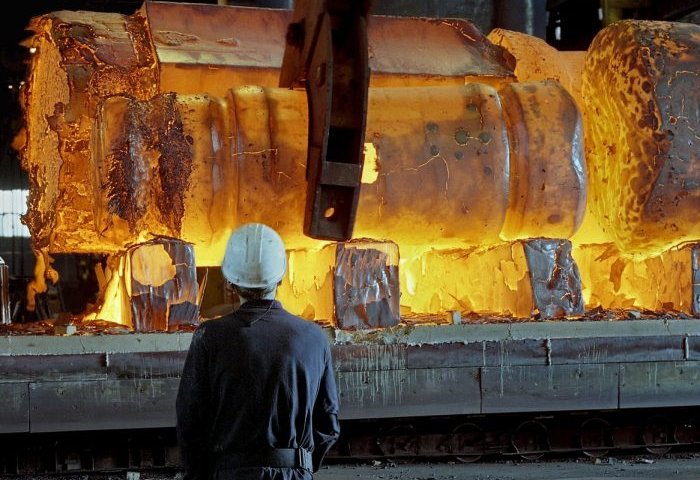Chinese steel companies are ramping up production at an unprecedented pace, even as the government calls for capacity cuts, raising fears of a new wave of cheap steel exports that could push world prices down.
Amid growing concerns from authorities, the CEO of a steel mill in Tangshan, a city east of Beijing, was detained in mid-July.
"The authorities, desperately trying to curb production, probably started the crackdown as a warning to others," say the market.
Beijing is desperately trying to cut steel production in large state-owned holdings, but at the same time, the Chinese authorities are making virtually no efforts to cut capacity in small and medium-sized companies, they say in the market.
China produced 577 million tons of rough steel in the first seven months of the year. The record rate of smelting will increase the annual steel production in the PRC to over 1 billion tons. The driving force behind the new leap is a rebound in steel prices, helped by government policies to stimulate economic growth, closing the vicious circle: incentives - production growth - price collapse.
The decline in steel prices prior to 2015 caused concern in the global steel industry. The Chinese government took drastic action to eliminate capacity around 2016, and by 2018 it had dropped by about 150 million tonnes. The authorities also cracked down on factories that produced low-quality dithiogenic steel made from scrap metal.
Prices have recovered by 2017. But the production of raw steel, which until 2016 was limited to 800 million tons, also increased.
A ton of hot rolled steel in China is now worth around 3,800 yuan (roughly $ 535) - still above the 2,000 yuan seen in 2015, but the price is steadily declining.
New car sales in the PRC did not reach last year's figures for 14 consecutive months until August. The protracted trade war with the United States has undermined Chinese consumer demand. Household appliance sales have not paid off. The government continues to spend on infrastructure as part of the stimulus program, but spending has not risen as planned due to local government debt.
There are now new sources of concern in Beijing. In recent years, Chinese steelworkers have closed outdated blast furnaces in an effort to reduce excess capacity and help the environment. But they also built new blast furnaces with reduced capacity.
Almost 70% of new ovens will be commissioned this year and next. The added operating capacity will be equivalent to approximately 61 million tonnes in 2019 and 62 million tonnes in 2020.
China's Ministry of Industry and Information Technology says it will strengthen oversight to prevent overproduction. But the recent surge in production continues, and it's unclear how effective the suppression will be. As a result, the global steel industry is on the verge of another decline in steel prices originating from China.
A surplus of Chinese steel may flow to Southeast Asia and other countries, putting downward pressure on the Asian market as a whole. And steel prices in the US fell despite the imposed trade protection due to weak demand. The problem is that the loss in demand could be repeated globally.
Iron ore prices have declined since April. But if production in China continues to grow, steelmakers could face a repeat of high material prices but low steel prices.
“Certain products are looking to export, and there is no doubt that this will have a strong impact on steel material prices in Southeast Asia,” said JFE Steel President and Chairman of the Japan Federation of Metallurgy Yoshihisa Kitano.





